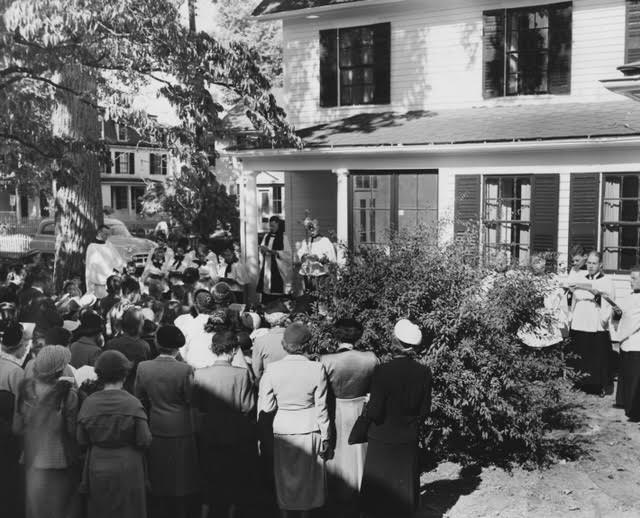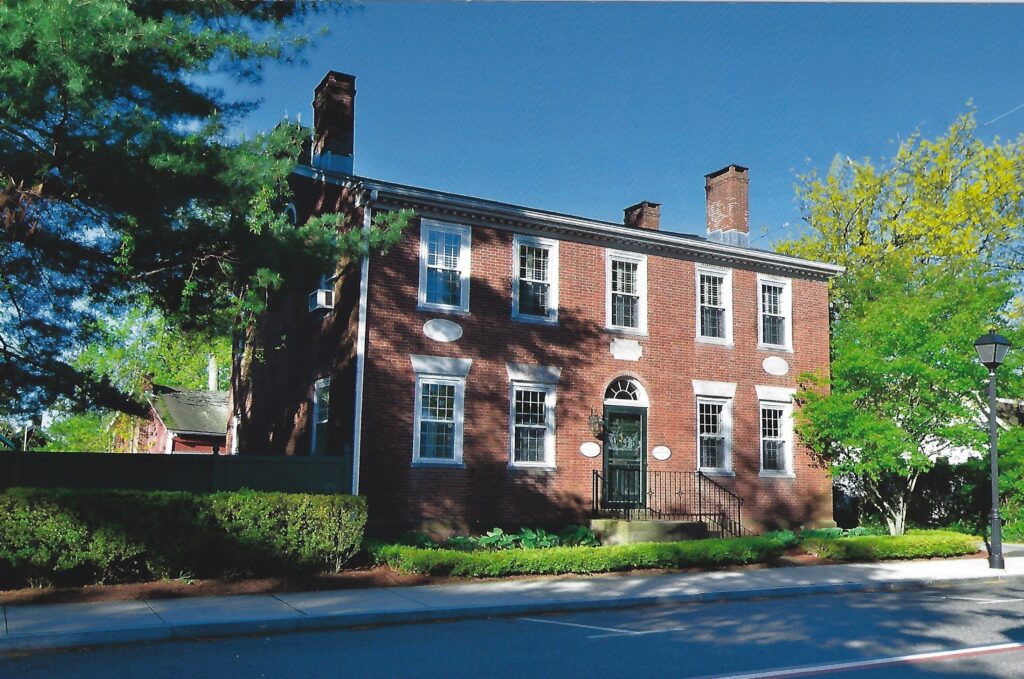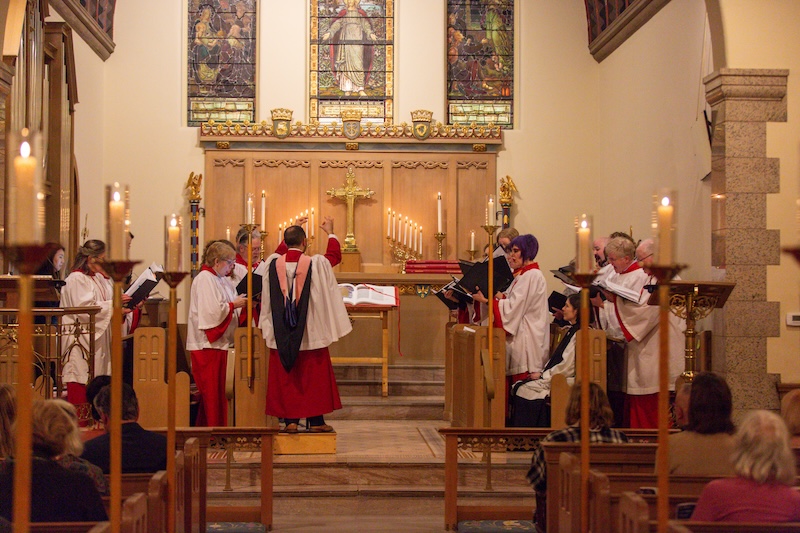Early History of St. John’s Church
St. John’s Episcopal Church was formed in 1790 and was initially named the First Episcopal Society of Old Saybrook, as the Town of Essex was not incorporated until the mid-1800s.
The first church building was erected in 1793 in a section of town called Mud River, near what is currently the Essex Steam Train Station. Around 1800, this building was moved to Pound Hill, which is now called Prospect Street. A steeple was added in 1817, and the church was enlarged in 1821. This church was sold to the Roman Catholic Church, after the current church was constructed in 1897. Unfortunately, a fire destroyed this church in 1926.
The current church building was built in 1897 and funded by a generous donation from the Hayden and Tucker families. Captain Joseph Tucker was a prominent ship master who married Mary F. E. Hayden. Their niece, Susan Loomis also contributed to the funding. The Tucker bequest stipulated that the new church building be erected on Main Street, adjoining a rectory building which had been purchased in 1833.
The church was designed by architect Joseph W. Northrup from Bridgeport. Construction of the church was completed in seven months using granite and brownstone that was obtained from local quarries along the Connecticut River. The Romanesque style was considered an outstanding form of church architecture at the time. St. Paul’s Episcopal Church on Nantucket, which was built in 1901, is nearly identical and was likely also designed by Northrup.
In 1896, Mary Hayden Tucker died and bequeathed her home to St John’s. Her home became the next church rectory. The house, located on Main Street near the Griswold Inn, was built in 1807 and is believed to be the first brick structure in Essex. The home originally belonged to Samuel Hayden, who was Mary’s father and a descendant of one of the original founders of St. John’s Church, Uriah Hayden. The original rectory, located next to the church, was turned into a parish house, and ultimately torn down in 1927 when the east wing of the church was made into the current Parish Hall.
Recent history of st. John’s
From the 1950’s through 2019
1950’s
In 1953, St John’s purchased a home on Cross Street, adjacent to the church. It became the Parish House, containing the church offices and choir room.
The wooden structure behind the altar, called a reredos, was added in the 1950s during a renovation of the chancel. The reredos was craved by Robert Robbins, a noted ecclesiastical architect who was responsible for the renovation project.
1960’s
The organ, on the left side of the Chancel, was designed, built, and installed in 1963 by Fritz Noack of Lawrence, Massachusetts. Noack is known for building high quality organs that are custom designed for the setting. Since 1960, the company has designed and built over 160 organs in the US. The organ was refurbished in 2013 for its 50th anniversary.

1990’s
In 1996, an extensive renovation and construction project was undertaken to accommodate the need for additional space and make the undercroft handicap accessible. This project included construction of an addition between the church and the parish office, as well as the creation of a Memorial Garden behind the church. As a part of this project, a sunken courtyard was excavated adjacent to the church, allowing handicap access and fire exits for the undercroft. Lastly, this project included renovations to the undercroft to provide classroom space, as well as a nursery, youth room, upgraded kitchen, and dining area.
2000’s
In 2006, after encountering roof leakage, St John’s replaced the original slate roof on the church and parish hall. The cost of this project was covered by a special fundraising effort. This fundraising effort brought in more than enough money to cover the expenses for replacing the roof at St John’s. A portion of the remaining funds was used to cover the cost of replacing the roof on the Anglican cathedral in Maciene, Mozambique, a diocese with which St John’s had a close relationship for many years.
In 2007, the rectory was sold, and the proceeds of the sale were put into a trust which is used to fund rector living expenses.
In 2019, St John’s created the Meditation Garden, which is located under the large tree on Main Street., next to the church. It is a place where we encourage people to stop and meditate as they are walking down Main Street.

The Rectors of St. John’s
- 1963-1991: Rev. Kenneth Thomas
- 1993-2002: Rev. Hope (Adams) Eakins
- 2002-2004: Rev. Dr. Chip Nix, Interim
- 2004-2019: Rev. Dr. Jonathan Folts
- 2019-2021: Rev. Linda Spiers, Interim
- 2021-2024: Rev. Kate E. Wesch
- 2024-2025: The Rev. Carol Gadsden and The Rev. Wilbert “Wilk” Miller, Interim
The parish has called The Rev. Dr. Elaine Ellis Thomas as the next Rector of St. John’s. She begins her ministry with us on July 1, 2025.

